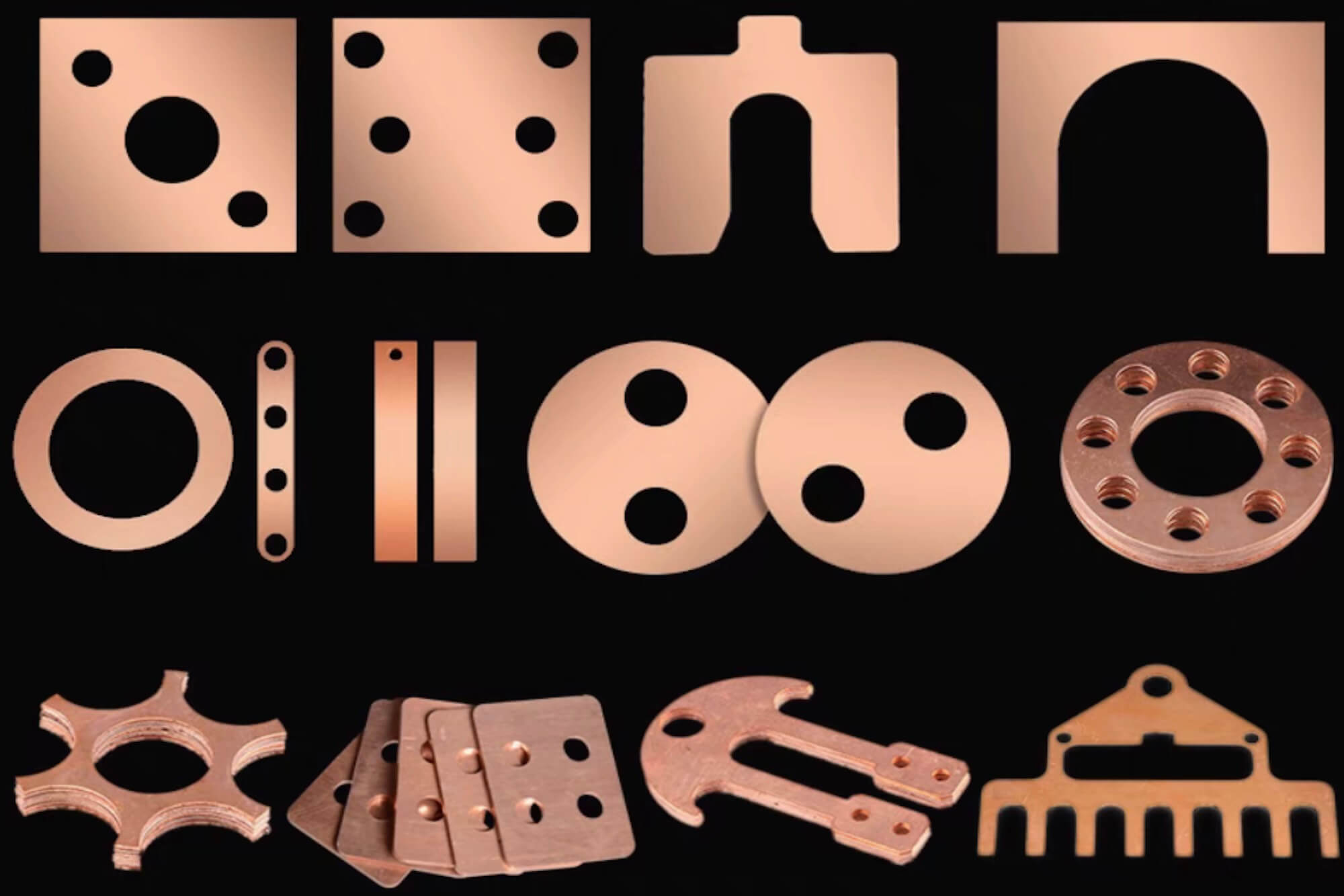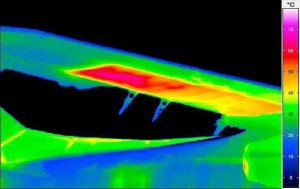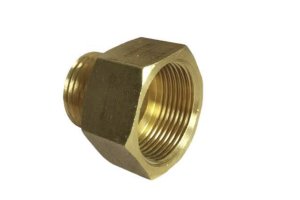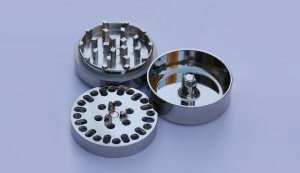Introduction: Why Focus on Red Copper Machining?
Red copper, also known as pure copper, has long been a material of choice across industries due to its unparalleled properties. Its unique combination of electrical conductivity, thermal efficiency, and corrosion resistance makes it indispensable in sectors like electronics, construction, and cookware manufacturing. However, these benefits come with their challenges, particularly when it comes to machining.
From my experience working on copper machining projects, I’ve seen how these challenges manifest in practice. Issues such as tool sticking, chip control, and maintaining surface quality often complicate workflows. At the same time, the rewards of mastering red copper machining are immense, as the material’s exceptional performance drives innovation across industries.
In this guide, I aim to provide a comprehensive look at the techniques, challenges, and best practices for machining red copper. Whether you’re new to machining or a seasoned professional, the insights here will help you optimize your processes and achieve consistent, high-quality results.
Material Properties of Red Copper
2.1 Chemical Composition and Classification
Red copper, or pure copper, is defined by its high purity, typically exceeding 99.9% copper content. This purity is the cornerstone of its exceptional properties, including conductivity, ductility, and malleability. Different grades of red copper offer specialized benefits, tailored to specific applications.
| Grade | Copper Content (%) | Unique Properties | Common Applications |
|---|---|---|---|
| C11000 | 99.90 | High conductivity, easy to work | Electrical wiring, connectors |
| C10100 | 99.99 | Ultra-pure, corrosion-resistant | Semiconductor applications |
| C12200 | 99.90 | Excellent weldability | Plumbing systems, heat exchangers |
| C23000 | 85.00 (Red Brass) | Improved strength and wear resistance | Architectural trim, decorative pieces |
Understanding the grade of copper is crucial for choosing the right machining techniques. For example, while C10100’s purity makes it ideal for sensitive electronic components, its softness can pose machining challenges that require specialized tool coatings and cutting parameters.
2.2 Key Properties
The unique physical and chemical properties of red copper drive its diverse applications. Here are the standout characteristics:
- Electrical Conductivity: Red copper’s conductivity is unrivaled, making it the material of choice for power transmission and precision electronics.
- Thermal Conductivity: Its ability to evenly distribute heat is why it’s favored in cookware and heat exchanger production.
- Corrosion Resistance: Red copper naturally forms a protective patina, ensuring longevity in both industrial and decorative environments.
- Malleability and Ductility: These properties make copper easy to shape but present challenges during machining, such as tool wear and deformation.
Practical Example: I’ve worked on a project involving high-purity C10100 red copper for a semiconductor application. Its malleability allowed precise shaping but required careful control of cutting parameters to prevent burr formation.
Technical Methods for Machining Red Copper
3.1 Traditional Machining Methods
Traditional machining methods such as turning, milling, and drilling remain integral to processing red copper. However, copper’s ductility and heat-conductive properties require adjustments to standard practices.
- Turning: To achieve smooth finishes, use sharp, polished carbide tools. Avoid excessive speeds, as they generate heat that can dull tools and degrade surface quality.
- Milling: A medium feed rate paired with coolant application minimizes tool wear while maintaining chip control.
- Drilling: Spiral drills with proper chip evacuation grooves are essential to prevent clogging during deep-hole drilling.
3.2 Advantages of CNC Machining
CNC machining has revolutionized the processing of red copper by providing unmatched precision and repeatability. Key advantages include:
- Consistency: CNC systems ensure tight tolerances across multiple parts, a critical requirement in industries like aerospace and electronics.
- Adaptability: With programmable paths, CNC machines can handle complex geometries and high-volume production runs with ease.
| CNC Feature | Impact on Red Copper Machining | Example Application |
|---|---|---|
| Adaptive Tool Paths | Reduces thermal buildup, extending tool life | Thin-walled cookware |
| High-Speed Machining | Minimizes tool engagement time | Complex heat exchanger components |
| Real-Time Monitoring | Enhances process stability for tight tolerances | Precision electronic connectors |
3.3 Emerging Technologies
Emerging methods like laser and waterjet cutting are gaining traction for machining red copper. While these techniques are more expensive upfront, their benefits include:
- Laser Cutting: Ideal for detailed, intricate designs.
- Waterjet Cutting: Preserves material properties by avoiding heat-affected zones, a significant concern in high-purity copper applications.
Practical Challenges and Solutions in Machining Red Copper
Machining red copper is a unique process that presents several challenges due to the material’s distinct properties. Its high ductility, excellent thermal conductivity, and softness make it an exceptional material for specific applications but also require a tailored approach to machining. In this expanded section, we’ll delve into common challenges and provide detailed solutions for overcoming them.
4.1 Tool Sticking
Problem:
Red copper is highly ductile, which means it tends to stick to cutting tools during machining. This leads to poor surface finishes, frequent tool wear, and reduced accuracy. Tool sticking, also known as built-up edge (BUE) formation, is a common issue when machining soft and ductile metals like red copper.
Solution:
- Coated Tools: Use tools with polished or diamond coatings to reduce friction and prevent material adhesion. Carbide tools with specific coatings like titanium nitride (TiN) or diamond-like carbon (DLC) are especially effective.
- Lubrication: Apply high-performance lubricants or cutting fluids to reduce friction and facilitate smoother cutting.
- Optimized Cutting Speeds: Lower cutting speeds minimize heat generation, which is a key factor in preventing material adhesion.
4.2 Heat Dissipation
Problem:
Red copper has excellent thermal conductivity, which means it rapidly transfers heat away from the cutting zone. While this property is beneficial in applications like cookware, it can cause uneven heat distribution during machining. This leads to tool overheating and increased wear.
Solution:
- Coolant Systems: Use high-pressure coolant systems to maintain stable cutting temperatures and prevent overheating. Ensure the coolant reaches the cutting edge effectively.
- Intermittent Machining: Employ techniques like peck drilling or interrupted cutting to allow tools to cool down periodically.
- Tool Selection: Use tools made of materials with high thermal resistance, such as ceramic or diamond-coated tools, to withstand heat dissipation.
4.3 Surface Finish Issues
Problem:
Soft materials like red copper are prone to scratches, burrs, and deformations during machining. Achieving a smooth and polished surface finish can be challenging, especially for components requiring high precision.
Solution:
- Precision Tools: Use sharp, precision-ground tools to minimize surface imperfections.
- Reduced Feed Rates: Lower feed rates during finishing cuts to ensure smoother surfaces.
- Vibration Control: Use rigid setups and dampening techniques to eliminate vibration during machining, which can compromise surface quality.
4.4 Chip Formation and Evacuation
Problem:
Red copper tends to form long, continuous chips during machining, which can clog tools and damage workpieces. Poor chip evacuation increases downtime and affects overall machining efficiency.
Solution:
- Chip Breakers: Use tools designed with chip-breaking geometries to produce smaller, manageable chips.
- Coolant Flow: Ensure a steady flow of coolant to flush chips away from the cutting zone.
- High-Pressure Air: Use compressed air to blow chips away from the workpiece, particularly during dry machining.
4.5 Tool Wear
Problem:
Soft materials like red copper can cause abrasive wear on cutting tools, particularly if impurities or surface coatings are present.
Solution:
- Tool Maintenance: Regularly inspect and maintain tools to prevent premature wear.
- Tool Material: Invest in high-quality tools made of carbide or diamond for extended tool life.
- Optimized Parameters: Adjust cutting speeds, feeds, and depths to reduce stress on tools.
4.6 Geometric Precision
Problem:
Red copper’s softness and malleability can make it difficult to maintain precise tolerances during machining. Components may deform under cutting forces or lose their dimensional accuracy over time.
Solution:
- Clamping and Fixturing: Use rigid and vibration-free fixturing systems to hold the workpiece securely in place.
- Incremental Cutting: Use multiple light passes instead of deep cuts to achieve the desired dimensions without deforming the material.
- Thermal Compensation: Account for thermal expansion and contraction when setting tolerances for high-precision components.
Real-World Example
In one of my recent projects, we faced significant challenges with tool sticking and surface finish issues while machining red copper connectors for an aerospace application. By switching to diamond-coated tools and implementing an advanced coolant delivery system, we were able to reduce BUE formation by 70% and achieve mirror-like surface finishes.
Key Applications of Red Copper
Red copper’s unique combination of properties makes it a preferred material for diverse industries. From electronics to architecture, its conductivity, thermal efficiency, and aesthetic appeal drive its use in countless applications. In this section, we’ll explore some of the most significant applications of red copper in detail.
5.1 Electrical and Electronic Products
Red copper’s unparalleled electrical conductivity, which approaches 100% IACS (International Annealed Copper Standard), makes it indispensable in the electronics industry.
Common Applications:
- Wires and Cables: Used in power distribution and communication networks.
- Busbars: Essential in electrical panels and substations for power transmission.
- Heat Sinks: Red copper’s thermal properties make it ideal for dissipating heat in electronic devices like CPUs and GPUs.
Why Red Copper?
- Its low electrical resistance ensures minimal energy loss.
- It withstands high temperatures without losing conductivity, making it suitable for demanding environments.
5.2 Cookware Manufacturing
Red copper cookware, such as pans and pots, is a premium choice for professional chefs and home cooks alike.
Advantages in Cookware:
- Even Heat Distribution: Red copper ensures consistent cooking by evenly spreading heat across the surface.
- Durability: With proper care, red copper cookware can last for decades.
- Aesthetic Appeal: The material’s natural sheen and patina add a luxurious touch to kitchens.
Applications in CNC Machining:
CNC machining enables the production of high-precision red copper cookware with uniform thickness and flawless finishes, enhancing both performance and aesthetics.
5.3 Decorative and Architectural Use
Red copper’s distinct color and ability to develop a natural patina over time make it a popular choice in architecture and design.
Applications:
- Sculptures: Red copper’s malleability allows for intricate designs.
- Building Facades: Used for both aesthetic and functional purposes, providing weather resistance and a unique visual appeal.
- Trim and Fixtures: Adds a touch of elegance to interiors and exteriors.
Real-World Example:
Many iconic buildings, such as the Statue of Liberty, use red copper for its durability and visual appeal.
5.4 Medical and Industrial Applications
Red copper’s biocompatibility and antimicrobial properties are invaluable in medical and industrial settings.
Medical Uses:
- Sterile Equipment: Surgical tools and hospital surfaces benefit from copper’s antimicrobial properties.
- Prosthetics: Red copper is sometimes used in implants due to its biocompatibility.
Industrial Uses:
- Heat Exchangers: Red copper is widely used in HVAC systems for its thermal efficiency.
- Gaskets and Seals: Its ductility makes it ideal for creating tight seals in industrial machinery.
5.5 Renewable Energy
Red copper plays a critical role in renewable energy systems, including solar panels and wind turbines. Its high conductivity ensures efficient energy transfer, while its corrosion resistance ensures longevity in outdoor environments.
Applications:
- Photovoltaic Panels: Used in wiring and connectors.
- Wind Turbines: Red copper components are essential for energy transmission.
5.6 Artistic and Custom Applications
Artists and craftsmen value red copper for its aesthetic versatility and ease of shaping.
Examples:
- Jewelry Making: Red copper is a favorite for creating intricate, handcrafted jewelry.
- Custom Sculptures: CNC machining allows for precision in producing custom copper designs for galleries or private collections.
How to Choose the Right Machining Service
Selecting the right machining service for red copper is a critical step in ensuring the success of your project. Red copper’s unique properties, including its high ductility, exceptional conductivity, and thermal sensitivity, require expertise, the right equipment, and a deep understanding of the material’s behavior. A poorly chosen service provider can lead to machining errors, increased costs, and delays, while a carefully selected partner can enhance efficiency, precision, and quality.
In this chapter, I’ll break down the essential criteria for choosing the right machining service for red copper, including key factors to evaluate, questions to ask, and red flags to avoid.
6.1 Key Factors to Evaluate
When evaluating a machining service provider, consider these core factors:
1. Experience with Red Copper
- Red copper machining is vastly different from machining other materials like steel or aluminum. Its softness and high heat conductivity mean it behaves differently under cutting forces.
- Look for service providers who have a proven track record of machining red copper specifically, as they will already be familiar with its unique challenges, such as tool sticking and thermal management.
2. Equipment and Technology
- Advanced CNC machines with capabilities such as adaptive toolpaths, precision cooling, and real-time monitoring are essential for high-quality red copper machining.
- Ask if the service provider uses specialized tools, such as diamond-coated or carbide tools, which are necessary for optimal performance when working with red copper.
3. Quality Assurance Processes
- A robust quality control system ensures that the final parts meet your specifications. Check if the provider follows international quality standards, such as ISO 9001, and has in-house inspection capabilities like CMM (Coordinate Measuring Machine) systems.
- Inquire about their tolerances and consistency, particularly for high-precision applications like electronic components or medical devices.
4. Customization Capabilities
- Not all machining services are equipped to handle custom or complex designs. Choose a provider that can adapt their processes to your specific requirements, whether it’s intricate geometries or unusual dimensions.
- Confirm their flexibility in handling both prototyping and full-scale production.
5. Turnaround Time
- Red copper machining often involves meticulous adjustments, which can impact production timelines. Ensure that the provider can balance precision with timely delivery.
6. Cost Transparency
- While cost should not be the sole deciding factor, it’s essential to work with a provider who offers clear pricing structures without hidden fees.
6.2 Questions to Ask a Potential Service Provider
Before committing to a machining service, ask these questions to assess their capabilities and reliability:
- Do you have experience machining red copper?
Providers with prior experience are more likely to deliver better results and handle the material’s specific challenges. - What types of tools and machines do you use?
Ensure they use tools and machines designed for soft, ductile materials like red copper. - What quality control measures are in place?
Look for rigorous inspection protocols and certifications that demonstrate a commitment to quality. - Can you provide references or case studies?
Testimonials and past project examples can provide insight into their reliability and expertise. - What is your typical lead time for red copper parts?
Confirm their ability to meet your project deadlines without sacrificing quality.
6.3 Common Mistakes to Avoid When Choosing a Machining Service
- Assuming All Metals Are the Same
Machining red copper requires a specialized approach. Avoid providers who do not acknowledge its unique properties and challenges. - Overlooking Quality Standards
A lack of certifications or quality assurance processes can lead to defective parts. - Prioritizing Cost Over Quality
While affordability is important, choosing the cheapest provider often results in higher costs down the line due to errors or inferior workmanship. - Ignoring Customization Needs
Providers without the ability to handle complex or custom designs may not be suitable for intricate red copper parts.
6.4 Red Flags to Watch For
- Lack of Experience with Red Copper: If the provider has little or no experience working with red copper, it’s unlikely they will meet your quality standards.
- Outdated Equipment: Providers using outdated machines may struggle to achieve the precision and consistency required for red copper machining.
- No References or Case Studies: A lack of verifiable past work is a major warning sign.
6.5 How to Compare Multiple Providers
To make an informed decision, compare providers using a scoring system based on the criteria discussed above. Here’s an example:
| Criteria | Provider A Score | Provider B Score | Provider C Score |
|---|---|---|---|
| Experience with Red Copper | 8/10 | 9/10 | 6/10 |
| Equipment and Technology | 9/10 | 8/10 | 7/10 |
| Quality Assurance | 7/10 | 9/10 | 5/10 |
| Customization Capabilities | 8/10 | 9/10 | 6/10 |
| Turnaround Time | 7/10 | 8/10 | 7/10 |
| Cost Transparency | 9/10 | 8/10 | 8/10 |
Based on the total scores, you can make a data-driven decision about which provider aligns best with your project needs.
6.6 Case Study: Selecting the Right Provider for a Red Copper Cookware Project
In one of my projects, we needed a machining service to produce high-precision red copper pans. After shortlisting three providers, we conducted a detailed evaluation:
- Experience: Only one provider had extensive experience with cookware-grade red copper, giving them a significant advantage.
- Customization: Another provider excelled in handling complex pan geometries, which was crucial for achieving our design goals.
- Quality Assurance: The winning provider had stringent QA processes, ensuring flawless finishes for consumer-grade products.
By carefully weighing these factors, we achieved a successful production run with minimal defects and ahead of schedule.
6.7 Conclusion
Choosing the right machining service for red copper requires a thorough evaluation of experience, equipment, and quality assurance. By asking the right questions, avoiding common mistakes, and using a structured comparison process, you can select a partner who delivers exceptional results, whether you’re producing cookware, electronics, or architectural components.
Advanced Technologies in Red Copper Machining
From hybrid machining methods to digital monitoring systems, technological advancements are enhancing efficiency and precision in red copper machining.
| Technology | Advantage | Example Use Case |
|---|---|---|
| Hybrid Machining | Combines additive and subtractive methods. | Prototyping intricate components |
| Digital Twin Integration | Simulates machining processes for optimization | Mass production of electronics connectors |
| Advanced Cooling Systems | Prevents tool overheating. | Prolonging tool life in cookware production |
The Future of Red Copper Machining
Red copper remains an essential material for modern manufacturing, and advancements in machining technologies continue to unlock its potential. By understanding its properties and leveraging the best practices outlined in this guide, you can ensure precision, quality, and efficiency in every project.
FAQ
1. What’s the difference between machining red copper and brass?
Red copper is softer and more ductile than brass, which makes it more prone to tool sticking and surface scratches during machining. Brass, on the other hand, is harder and easier to machine but lacks the same level of electrical and thermal conductivity.
2. What tools are ideal for machining red copper?
High-quality carbide tools with polished or diamond-coated surfaces are ideal for machining red copper. These tools reduce tool wear and minimize material sticking.
3. How can I prevent tool sticking when machining red copper?
Use coated tools, optimize cutting speeds and feeds, and apply high-quality lubricants or coolants to reduce friction and heat buildup.
4. What is the best machining method for red copper sheets?
- Waterjet cutting is ideal for red copper sheets as it avoids heat-affected zones and maintains the material’s properties. Laser cutting can also be used but requires careful heat management.
5. How do I ensure a smooth surface finish on red copper?
- Use sharp tools, apply proper coolant, and reduce feed rates to avoid scratches or burrs. Precision-ground tools can also help achieve a polished finish.
6. Can red copper be welded or brazed after machining?
Yes, red copper is highly weldable and brazable. Post-machining processes like welding require clean surfaces to ensure strong joints and avoid oxidation.
7. What cutting speeds and feeds should I use for red copper?
Use low cutting speeds and moderate feed rates. A general guideline is 100-300 surface feet per minute (SFM) for cutting speeds and 0.002-0.005 inches per tooth (IPT) for feed rates.
8. How do I handle chip control when machining red copper?
Red copper tends to produce continuous chips. Use tools with chip-breaking geometries and ensure effective chip evacuation with adequate coolant flow.
9. Is CNC machining suitable for red copper prototyping?
Absolutely. CNC machining offers high precision and repeatability, making it an excellent choice for red copper prototyping and complex designs.
10. What industries use machined red copper components?
Red copper is widely used in electronics (connectors, heat sinks), cookware (pans, pots), architecture (decorative panels), and industrial applications (gaskets, fittings).
11. What are the common challenges in machining red copper?
Common challenges include tool sticking, rapid heat dissipation, continuous chip formation, and achieving consistent surface finishes.
12. How do I reduce machining costs for red copper components?
Optimize tool paths, use high-quality tools to reduce tool replacement costs, and partner with experienced machining services that minimize material waste.
13. Can red copper components be post-processed?
Yes, red copper parts can undergo post-processing techniques like polishing, plating, or heat treatment to enhance their appearance and functionality.
14. What tolerances can be achieved when machining red copper?
With CNC machining, tolerances as tight as ±0.001 inches can be achieved, depending on the complexity and size of the part.
15. How can I select the right machining service for red copper?
Look for providers with experience in red copper machining, advanced CNC equipment, and robust quality assurance processes. Ensure they can handle your specific design and production requirements.
Other Articles You Might Enjoy
- Understanding the Density of Copper in Precision CNC Machining
The Relationship Between Copper’s Density and CNC Machining Copper is a highly versatile material, and its use in CNC machining is well-established, particularly for industries requiring high precision. But one…
- CNC for Copper Pipe: Revolutionizing the Efficiency and Precision of Copper Pipe Processing
How CNC Technology Plays a Vital Role in Copper Pipe Processing Copper pipes are indispensable across multiple industries, from plumbing and HVAC systems to automotive and medical applications. However, achieving…
- Revealing the Annealing Process of Copper and Alloys in CNC Machining Parts
In the realm of CNC machined parts, achieving the perfect balance of strength, flexibility, and durability often requires meticulous heat treatment processes. One such crucial process is annealing, especially for…
- Enhancing Durability with Copper and Nickel Plating on CNC Machining Parts
Electroplating is like giving metal parts a shiny, protective armor. Imagine turning a dull, rusty piece of metal into a gleaming, robust part ready to withstand the test of time.…
- Prototype CNC Machining in Copper: Precision Engineering Solutions
Introduction to Prototype CNC Machining in Copper and Its Precision Engineering Solutions CNC (Computer Numerical Control) machining is a manufacturing process used worldwide, providing precise control of machinery and tools…
- The Ultimate Guide to Machining Red Metals: Copper vs. Brass in CNC Operations
Introduction to Machining Red Metals and CNC Operations In the broad spectrum of machining operations, red metals, such as copper and brass, hold a significant place due to their distinctive…
- Maximizing Precision in CNC Machining: Techniques and Tips
Importance of Precision in CNC Machining Precision is an fundamental component in the field of Computer Numerical Control (CNC) machining. It entails producing parts that are not only accurate but…
- Optimizing CNC Machining Parts Using Constant Surface Speed Techniques
CNC machining, particularly on lathes, can be a complex process, but understanding and utilizing constant surface speed (CSS) techniques can simplify and enhance the efficiency of your operations. The key…
- Precision CNC Machining of Steel: High-Volume Production
Precision CNC Machining and High-Volume Production As an integral part of modern manufacturing processes, Precision Computer Numerical Control (CNC) machining brings about unmatched accuracy and consistency in the production of…









